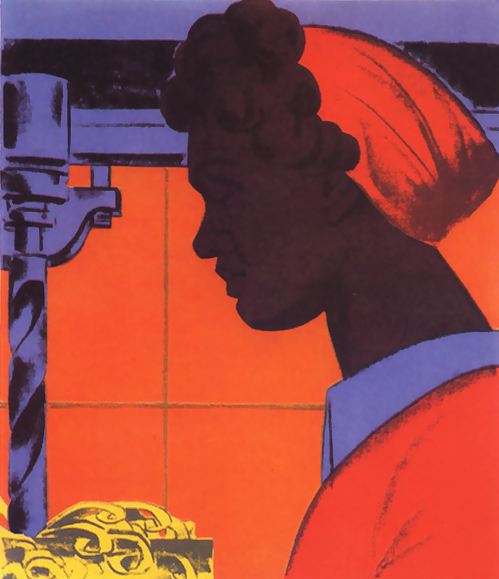 Silkscreen
Silkscreen15 1/4 x 13 inches (38.6 x 33 cm)
Edition of 54
In 1906, as a young teenager, Gellert immigrated to New York with his family. He studied at Cooper Union and
the National Academy of Design before the outbreak of WWI. When his brother died in the army, he became politically involved and began to contribute to radical journals such as Masses, The Liberator, and New Masses. Gellert was also a staff artist for The New Yorker from its inception in 1925 through 1946. His portfolio of 19 silkscreens, Century of the Common Man, illustrate excerpts of a speech made by Democratic Vice-President Henry Wallace in 1943 as commissioned by the International Workers Order, Inc. of New York.
Each silkscreen depicts utopian scenes of a collaborative, multicultural society alongside anti-Nazi and anti-fascist imagery. Although Gellert
planned an edition of 54, few complete portfolios exist. A selection of eight silkscreens from Century of the Common Man was included in the
Whitney’s inaugural exhibition, America is Hard to See, at its new downtown location in 2015.
Each silkscreen depicts utopian scenes of a collaborative, multicultural society alongside anti-Nazi and anti-fascist imagery. Although Gellert
planned an edition of 54, few complete portfolios exist. A selection of eight silkscreens from Century of the Common Man was included in the
Whitney’s inaugural exhibition, America is Hard to See, at its new downtown location in 2015.